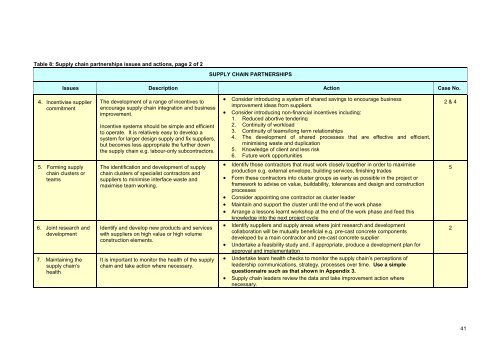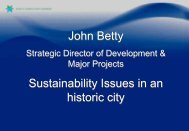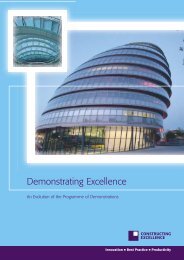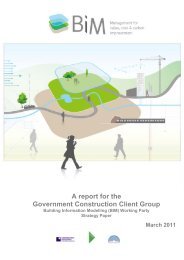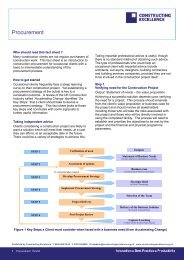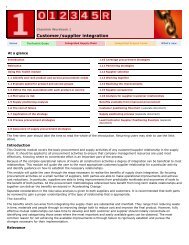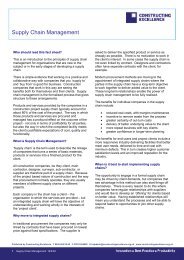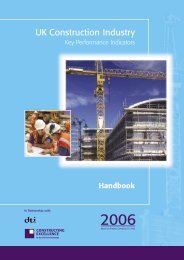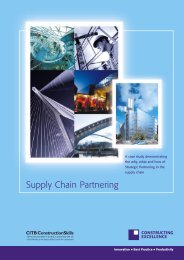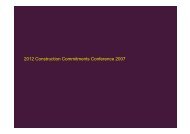Interserve Project Services Supply Chain Development
Interserve Project Services Supply Chain Development
Interserve Project Services Supply Chain Development
Create successful ePaper yourself
Turn your PDF publications into a flip-book with our unique Google optimized e-Paper software.
Table 8: <strong>Supply</strong> chain partnerships issues and actions, page 2 of 2<br />
SUPPLY CHAIN PARTNERSHIPS<br />
Issues Description Action Case No.<br />
4. Incentivise supplier<br />
commitment<br />
5. Forming supply<br />
chain clusters or<br />
teams<br />
6. Joint research and<br />
development<br />
7. Maintaining the<br />
supply chain’s<br />
health<br />
The development of a range of incentives to<br />
encourage supply chain integration and business<br />
improvement.<br />
Incentive systems should be simple and efficient<br />
to operate. It is relatively easy to develop a<br />
system for larger design supply and fix suppliers,<br />
but becomes less appropriate the further down<br />
the supply chain e.g. labour-only subcontractors.<br />
The identification and development of supply<br />
chain clusters of specialist contractors and<br />
suppliers to minimise interface waste and<br />
maximise team working.<br />
Identify and develop new products and services<br />
with suppliers on high value or high volume<br />
construction elements.<br />
It is important to monitor the health of the supply<br />
chain and take action where necessary.<br />
• Consider introducing a system of shared savings to encourage business<br />
improvement ideas from suppliers<br />
• Consider introducing non-financial incentives including:<br />
1. Reduced abortive tendering<br />
2. Continuity of workload<br />
3. Continuity of teams/long term relationships<br />
4. The development of shared processes that are effective and efficient,<br />
minimising waste and duplication<br />
5. Knowledge of client and less risk<br />
6. Future work opportunities<br />
• Identify those contractors that must work closely together in order to maximise<br />
production e.g. external envelope, building services, finishing trades<br />
• Form these contractors into cluster groups as early as possible in the project or<br />
framework to advise on value, buildability, tolerances and design and construction<br />
processes<br />
• Consider appointing one contractor as cluster leader<br />
• Maintain and support the cluster until the end of the work phase<br />
• Arrange a lessons learnt workshop at the end of the work phase and feed this<br />
knowledge into the next project cycle<br />
• Identify suppliers and supply areas where joint research and development<br />
collaboration will be mutually beneficial e.g. pre-cast concrete components<br />
developed by a main contractor and pre-cast concrete supplier<br />
• Undertake a feasibility study and, if appropriate, produce a development plan for<br />
approval and implementation<br />
• Undertake team health checks to monitor the supply chain’s perceptions of<br />
leadership communications, strategy. processes over time. Use a simple<br />
questionnaire such as that shown in Appendix 3.<br />
• <strong>Supply</strong> chain leaders review the data and take improvement action where<br />
necessary.<br />
2 & 4<br />
5<br />
2<br />
41


